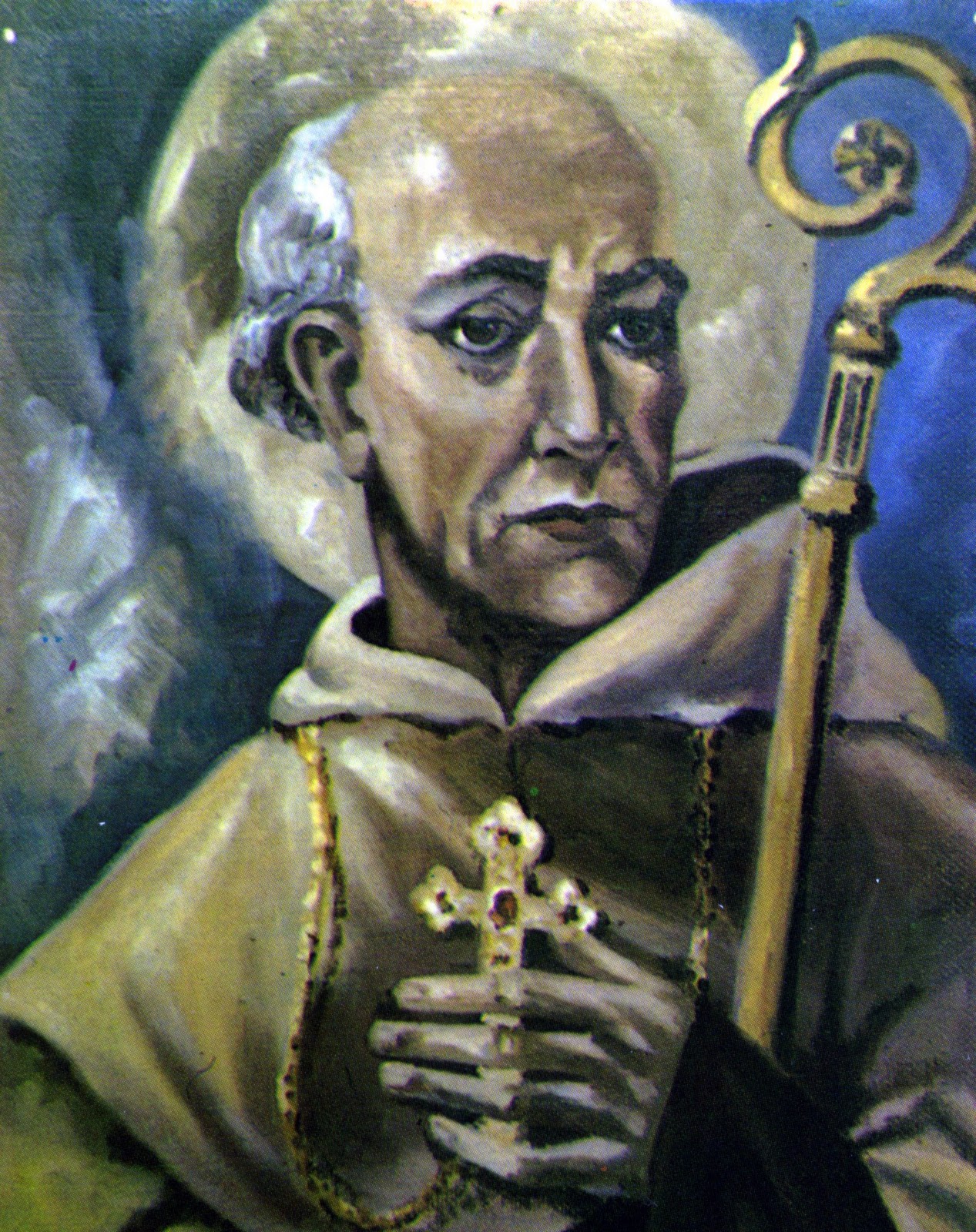by Father Leopold Gluckert, O.Carm.
In the context of the Middle Ages, Andrew Corsini stands out as one who was ahead of his time as a church reformer and a saintly example of what a leader should. In the calamitous 14th century, bishops tended to comport themselves like feudal nobility, commanding armies and administering their dioceses like city-states. 
He was born in Florence sometime between 1315 and 1318, one of 12 children. His parents, Nicola and Gemma Corsini, led one of the most powerful families in the prosperous Florentine Republic. Young Andrea passed his early years without any unusual happenings, but turned to religion as a teenager and entered the Carmelites. Our first documented trace of him appears in 1338, when he is listed as a member of the community at the Carmine, on the southern bank of the Arno. During that period, the Carmine was fortunate to be a community known for its sanctity and regular observance, not necessarily a given condition in the early Renaissance.    Fra Andrea completed his studies and became a lector or professor there, where he taught the younger students. He was transferred briefly to Pisa 1344, but then returned to Florence and happily resumed teaching. But advancement came quickly because of the obvious quality of his character. The 1347 provincial chapter at Pistoia named him a counselor, and the 1348 general chapter at Metz made him Tuscan provincial. It was at that precise moment that his leadership would be tested, since Florence, like all of Europe, had to endure the ravages of the Black Death. Over 100 Carmelites died of the plague, according to the provincial necrology. Andrew stoically encouraged his brothers to maintain their courage, and set about rebuilding the physical and moral fabric of their world. He did not have much time to do so. In October 1349, Pope Clement VI nominated him to be the bishop of Fiesole, a pretty hill town about 5 miles north-east of Florence. Andrew arrived in March of the following year to take up his duties, and they were daunting indeed. It had been over a century since a bishop had actually lived in Fiesole, since it was more fashionable and comfortable to reside in Florence. The cathedral and the bishop’s residence were crumbling from neglect.  As bishop, Andrew lived among his faithful people in the old bishop’s house, and quickly set to work repairing both the material and spiritual damage to his diocese. He spared no energy to rebuild the cathedral, restore parish churches, and improve the moral life of his priests. He was an energetic and inspiring preacher, and a generous friend of the poor and sick. He continued to wear his Carmelite habit as bishop, and invited 2 friars from the Carmine to live with him. He disbanded the large Episcopal retinue, and reduced his servants to only six, who lived with the Carmelites as a religious community. He considered himself the “father and helper of the poor†and devoted special care to the sick in the wake of the devastating plague. In 1372 he founded a confraternity for the encouragement and sanctification of priests. As an eloquent preacher of peace and reconciliation, he was frequently asked to mediate disputes between powerful families and feuding towns. He became so successful as a peacemaker for Fiesole and Florence that he was also called on to reconcile factions in Prato and Pistoia. Worn out by his vigorous ministry, Andrew died in January of 1374, probably in his early 60’s. The canons of Fiesole wanted to bury him in the cathedral, even though Andrew had expressed a desire to rest in the Corsini family tomb in Florence. With the help of the next bishop, Neri Corsini (Andrew’s brother), a contingent of Carmelites stole his body during the night a month later. An elaborate tomb was designed for him in the Carmine. That monument was obliterated in 1770 when a disastrous fire destroyed most of the church, although the body was not harmed. Andrew’s memory continued to be venerated in both cities. He had been a devout religious and an outstanding bishop, as well as a patriot and a civic leader. He was canonized by Pope Urban VIII (1629), and Pope Clement XII (Lorenzo Corsini) built a chapel to honor him in Rome’s cathedral of John Lateran (1730). Long before the Council of Trent set strict guidelines for bishops and pastoral leaders, Andrew Corsini traced out a pattern for a true shepherd. The inscription on his tomb called him “marvelous for the example of his life and his eloquence.â€Â Would that all the Church’s leaders could be so good.

